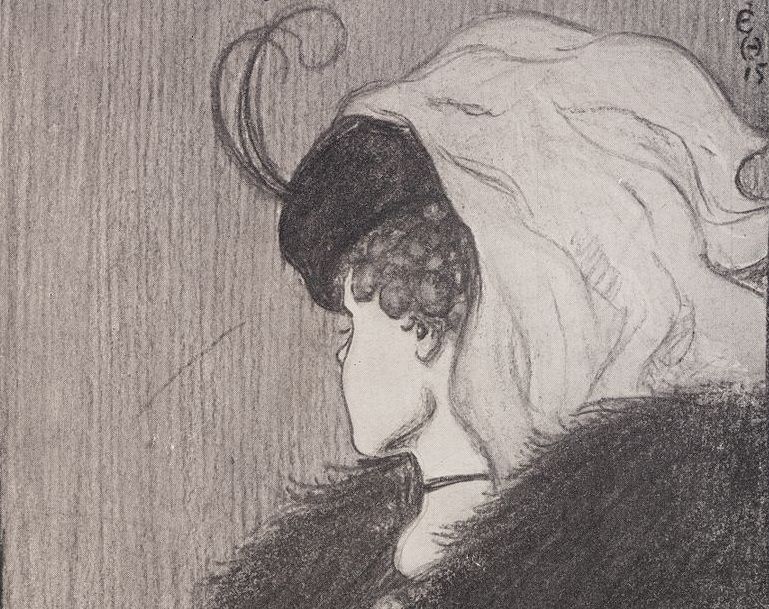
Look at the image below. What do you see first?
The answer is usually one of two things: either a young woman wearing a hat turning away or an older lady with a large nose and pronounced chin facing sideways.
Intriguingly, your response may depend on your age, at least that's the conclusion of a study published in the journal Scientific Reports.
To explore whether our own age biases affect subconscious face perception, researchers from Flinders University in Australia conducted an experiment with the famous ambiguous image—known as "My Wife and My Mother-in-Law".
"We were interested in how individual differences in traits, such as age, cause people to see things differently," Mike Nicholls, an author of the paper from Flinders, told Newsweek. "The image is perfect for this because people either see it as a young or old woman."
Nearly 400 people (242 males and 141 females) from the U.S., aged between 18 and 68 years old, took part in the study. After being shown the image for less than a second, the participants were asked what they thought the age and gender of the woman they saw first was. The results showed that people tended to see the woman that was closer to their own age.
"We found that younger observers tended to see the young woman whereas older observers tended to see the older woman," Nicholls said. "The most interesting thing is that this bias seems to be sub-conscious. The image was only shown for half a second and observers were not told that they would have to make a judgement of age."
The majority of the participants saw the younger woman first, but this is likely due to the fact that there was a higher proportion of younger participants. The median age of those who took part was 32.
The reasons for this effect are rooted in our psychology, according to the researchers. Our perception of faces relies on a number of processes in the brain. Faces of people in social "in-groups" receive more in-depth neurological processing.
"Humans have "in" and "out" social groups, which can relate to things such as sex, religion and age," Nicholls said. In the current study, we think that young and old people have an unconscious bias towards attending to their own-age group. This bias causes them to see a lady, which is consistent with their age group."
The "own-age effect" seen in the study could potentially have an effect on social interactions between people of different ages, according to the researchers.

"I think we need to be aware of sub-conscious biases and compensate for them," Nicholls said. "For example, in an interview panel, it is most probably important to have the panel composed of people of different ages to compensate for any unconscious biases."
The effect also ties in with social and cultural practices which are less inclusive towards the elderly—in the Western world at least. But these age-related biases are not necessarily universal across cultures, so the results of the study could well have been different if the participants were from another country.
"Cultures that have more inclusive attitudes towards ageing may not show this effect," he said. "For instance, in countries like Japan, where the elderly are included in the family unit and house, people may not show own-age biases."
The famous image, drawn by British cartoonist William Ely Hill, was published in American humor magazine Puck in November 1915, although the oldest known version of it is found on a German postcard from 1888. Over time, the image became well known to psychologists and has appeared in numerous textbooks and experimental studies.
This article has been updated to include additional comments from Mike Nicholls.
Uncommon Knowledge
Newsweek is committed to challenging conventional wisdom and finding connections in the search for common ground.
Newsweek is committed to challenging conventional wisdom and finding connections in the search for common ground.
About the writer
Aristos is a Newsweek science reporter with the London, U.K., bureau. He reports on science and health topics, including; animal, ... Read more
To read how Newsweek uses AI as a newsroom tool, Click here.








